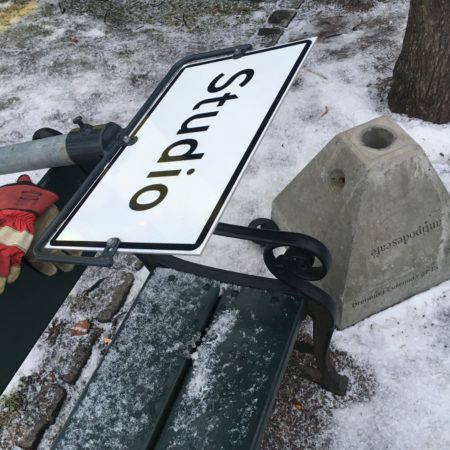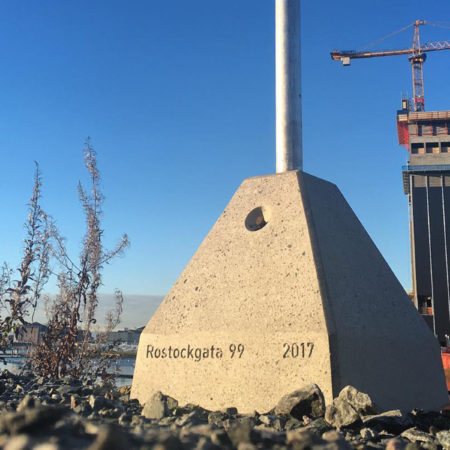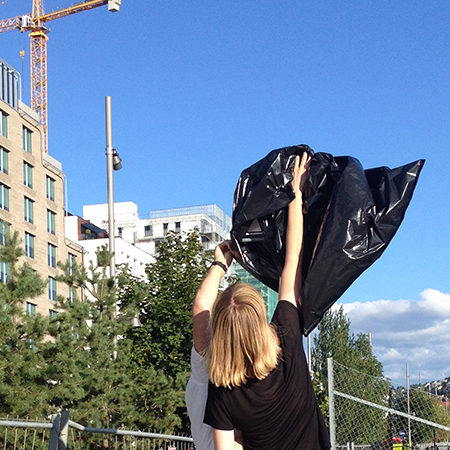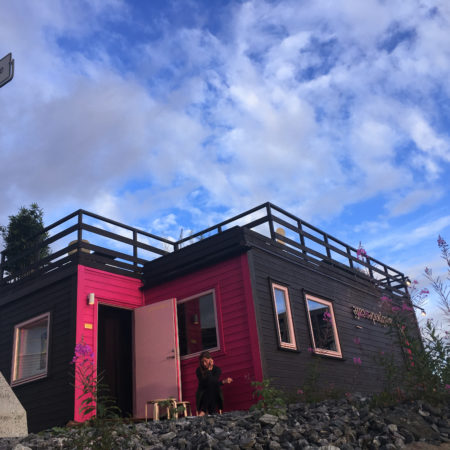Overview
- Listing categories antipodes café series / Situations / Things / Urban intervention
- Location / Region Norway/ Oslo
- Date and time from 2015.09.11 17:00
- Date and time to 2022.01.01 00:00
Description
“Where, the evening that the Great Wall of China was finished, did the masons go?”
—
After securing construction permits for the æSeries venues, official addresses were defined and engraved on precast concrete pyramids with the placement year. These blocks secured galvanized steel poles with reflective double-sided signs displaying the venues’ names using standard construction materials, dimensions, visual composition, and typography. Upon relocation, æCornerstones vanished but contributed to the move. The new addresses and years of placement were then added to the concrete bases. Ceremonies around these sculptures were distinct events. The first occurred on September 11th, 2015, at æInformasjonssenter during Oslo Kulturnatt—a simple gathering where the first odd number on the new main avenue was unveiled. A year later, at æDEG15, still standing alone on its side of the avenue, the sculpture’s anniversary was celebrated. Architect Juan Hererros, now a chef, shared tortillas and stories of his contribution to the future of Oslo’s spectacular district. This sculpture continued with æStudio in two other locations.
Cities are rich in symbols, with cornerstones standing out as both notable and imperceptible. True to their name, they are fundamental pieces defining a structure. Throughout the longstanding tradition of cornerstone placement ceremonies, various rituals have unfolded, encompassing oblations, speeches, and decorative performances. Now subtle yet visible and often engraved, they highlight specific information such as the date of construction, decision-makers, and relevant power structures. Additionally, these cornerstones may conceal items from the construction’s inception time—newspapers, music albums, letters, and drawings. Beyond detailing rituals, they symbolize a desire for eternity. On prominent developments, one can easily find cornerstones with carved names of kings, clerics, politicians, owners, investors, local celebrities, or institutions, along with the date and name of the place. They serve as an opening parenthesis for the construction process, closed –perhaps with the cutting of a ribbon– at the new venture’s inauguration.
Time may return the first of æCornerstones to its original location, now transformed into a ‘permanent’ sculptural piece in an area devoid of any construction site traces. Three of the four sides bear addresses where it was previously placed, all associated with public spaces, while the fourth side may feature a plate with concise information on the sculpture. Et blått skilt? The location offers seamless attachment, avoiding dramatic costs or disruption to the area. A pre-existing light pole will illuminate it during long nights, and its robust design, capable of withstanding harsh city life and weather conditions, will naturally emphasize any misplacement, delicately contrasting with its meticulously designed surroundings. Or maybe we encounter it inside a hotel lobby?▪
SUPPORT

THANKS
OSU
Veidrift
Jacob Fonts















